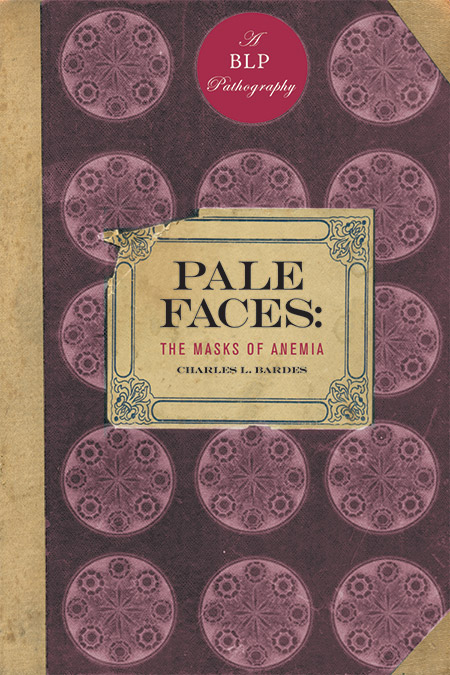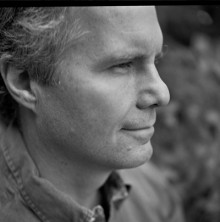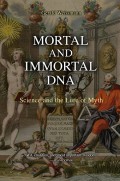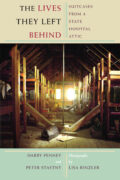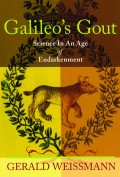“Bardes casts a wide net over science, literature and philosophy in this marvelously literate study. . . . Readers with a passion for multidisciplinary and well-crafted writing will find pleasure here.”
Publishers Weekly
( link)-
on
“An appetizing smorgasbord of stories of considerable erudition and wide interest. For readers seeking intellectual entertainment and exploration, this is a delightful book.”
Choice
-
on
“Charles L. Bardes’s meditations on medicine . . . are beautifully—transparently—written, deeply informed, consistently probing the implications of their subject matter, and they carry surprise.”
Sven Birkerts, from “Charles Bardes, An Appreciation,” Agni
( link)-
on
“Charles L. Bardes writes with a wonderfully creative and richly literate style. . . . It is an illusion unmasked in this interesting and rewarding book that diseases are technical things separate from the world of language and meanings in which we are all immersed.”
Eric Cassell, author of The Nature of Suffering and the Goals of Medicine
-
on
“Denis Diderot wrote that the organs of the body have their particular history, their infancy, youth, and senility. Each one has a biography. In Pale Faces, Dr. Charles L. Bardes has shown himself a wonderful biographer of the blood-forming system. His depiction of the origin, vicissitudes, and, in a word, the silent majesty of the structures that make and destroy the blood, is no less than masterful.”
F. Gonzalez-Crussi, MD, author of On Seeing and On Being Born
-
on
Bellevue Literary Press Pathographies series
Who would have thought that something so commonplace as iron deficiency would lead to prehistoric ochre, Egyptian amulets, Renaissance alchemy, Victorian projections of maidenhood, and the astrophysical end of everything?
Whether mild or deadly, anemia affects an essential body fluid: blood. In Pale Faces, Charles Bardes probes deeply into this illness as metaphor by exploring the impact of both science and culture on its treatment across the ages. His innovative “life” of this condition ranges widely through history, mythology, literature and clinical practice to examine how our notions of specific medical conditions are often deeply rooted in language, symbolism and culture.
Delving into the annals of anemia and its treatment, he takes us on a fascinating journey back through the history of medicine—from the Greeks and ancient practices of bloodletting and magic up to the diagnostic rituals of a modern medical office. A scholar of the literary as well as the medical arts, Bardes gives us a beautifully written free-ranging text, resonant with poetic associations yet anchored in concrete clinical experience.
As a practicing physician, Bardes is able to draw upon his direct experience with patients to demystify the doctor/patient relationship. Through detailed descriptions of the diagnostic processes involved in blood related conditions, as well as the particular understanding of the inner workings of the human body provided by modern medical science, we are treated to the complex ways in which doctors think.
Excerpt from Pale Faces
Modern medicine presents itself as a forward march of rational, scientific, progressive enlightenment, a triumph of fact. But beneath this bright and cheery tale lie darker layers of myth, alchemy, magic, ritual, oracle, memory, for- getting, fear, and melancholy.
Anemia is not exactly a disease but rather a core medical idea, like fever, that spans the world’s many ages and its many places. How a culture comprehends this deficiency of blood, among the commonest of all human afflictions, bespeaks its concerns, its science, and its mythos.
The complete biography of a disease would unfold both its rationalized knowing (science) and its other-mediated knowing, which takes the form of folkloric, literary, religious, symbolic, and vatic expression. Also its poems, whether lyric, epic, ode, or dithyramb; also its unknowing.
Anemia, anemic, no blood, bloodless, a deficiency of blood. My life’s blood is deficient.
Anemia is a doctor’s number, rendered by a machine. Anemia is a man’s pallor, his weakness, his fatigue, his sickness. I feel weak, I feel myself less a man, my manhood slips away, my lifeblood slips away, so this is how it is, living less, someday living not. The number half-records the sensation and half-predicts it, a foretaste of future dying, also a forecast. The physician speaks and listens, the blood count speaks, too, to him.
Anemia is a new idea, born of the instruments and later the machines that measure the properties of a person’s blood. Anemia is an old idea, touching all we think and feel of blood, all we have ever thought or felt, here or elsewhere, now or before. Anemia aligns pairs of opposites: strength and weakness, vigor and lassitude, ruddy and pale, hearty and sickly, lively and moribund, robust and sallow, active and passive, virile and effete, sanguine and melancholic. Blood is life, lost blood is lost life, spilt life, anemia.
Blood circulates within the vessels and the heart, within the flesh and the organs, constant motion, life. Blood sits tranquilly under the microscope.
This book is an excursion, riff, or romp through the many cultural, literary, mythological, ritualistic, historical, and to some degree biological aspects of the medical condition anemia. To avoid cluttering the pages with footnotes, the references occur in endnotes that are an integral part of the text itself. These mean to add to the reader’s pleasure, not to spin about academics. I invite readers who like this sort of thing to look at them from time to time.
Is anemia the sickly feeling a patient experiences, or the cells seen by a microscopist, or the number a machine prints out, the doctor interpreting the number, the patient hearing his number related, the construction of anemia, its history, its story, its understory, its fictive representations, its memory, its linkages, its metaphors, its allegories, its ceremonies, its concrete indication of disease or death? Its alieniloquium, its other- speak? Would a complete account not include all these things? If you prick us, do we not bleed?


